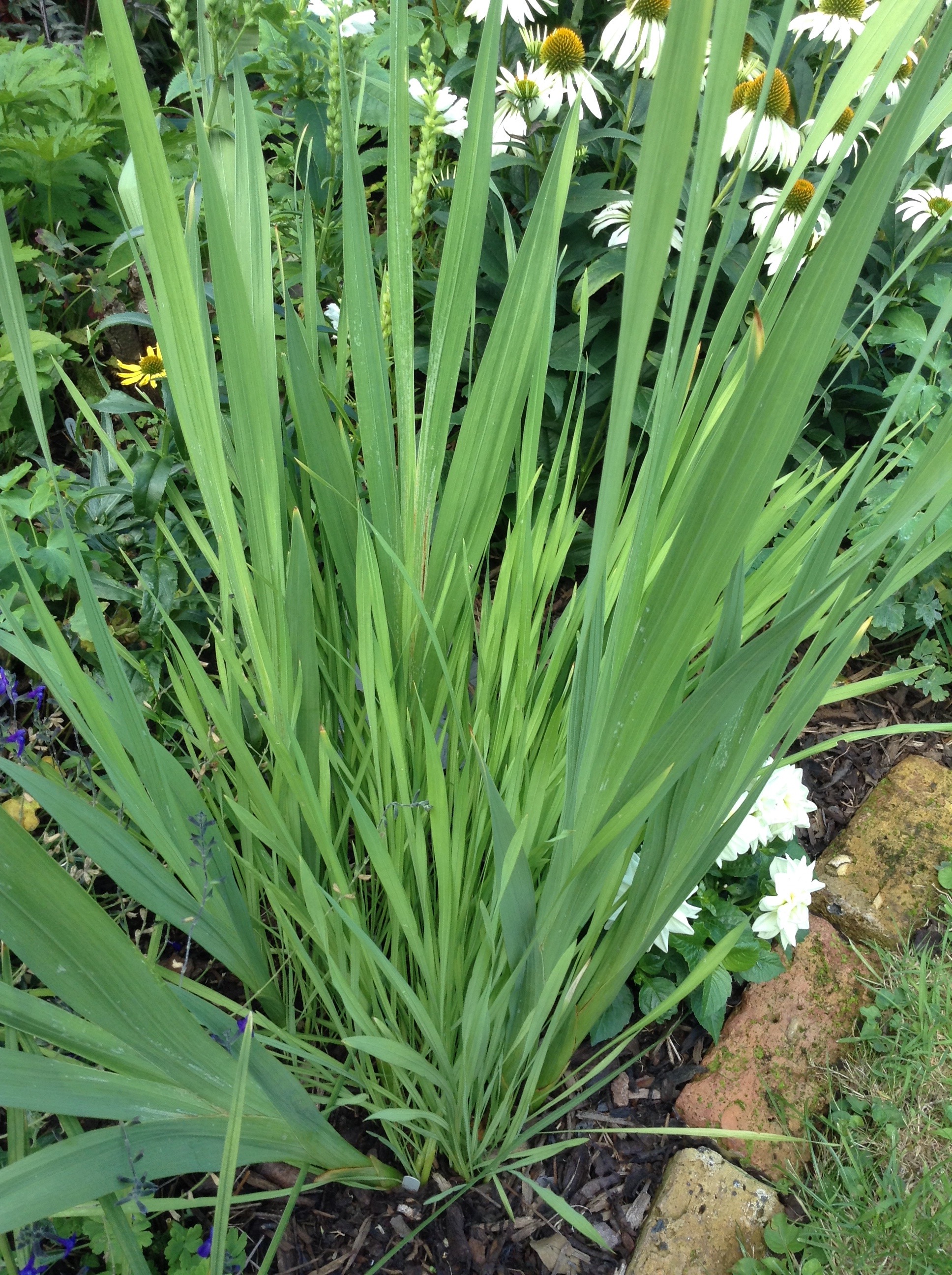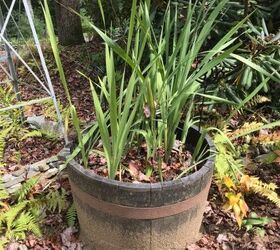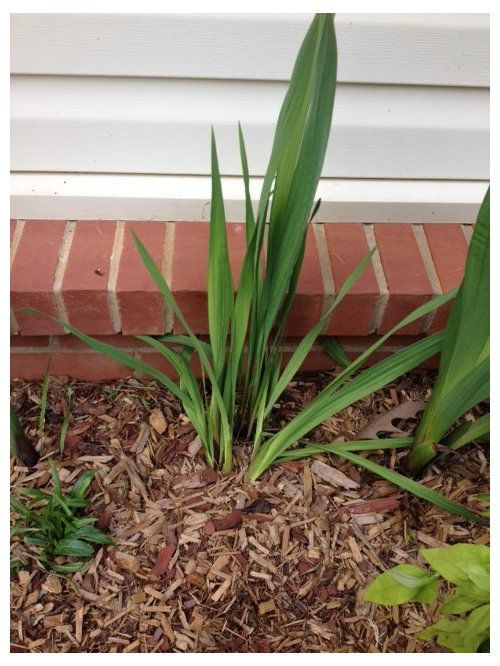
When planted in excessive shade, moist soil, or if they have been damaged by frost the previous Winter, gladiolus do not bloom. Gladiolus need winter protection and well-draining soil in order to bloom effectively. Gladiolus flowering can also be hampered by excessive fertilizer.
Gladiolus normally take two to three months to bloom after the corm-shaped bulbs are planted. Flowering is also influenced by the weather; during the Summer, heavy rain and dark days produce significantly less flowers.
Continue reading to learn why your gladiolus isn’t blooming and how to encourage gladiolus growth.
Table of Contents
Too Much Shade for Gladiolus to Flower
All species of gladiolus need at least six hours per day of direct sunlight in order to thrive.
In South Africa and Mediterranean nations in Europe, gladiolus thrive in broad meadows where they receive full sun and bloom magnificently.
Although you are not need to live in a Mediterranean environment, it is crucial to place your gladiolus in the garden area that receives the most sunlight so that it has enough energy to bloom.
Summertime flower displays are directly associated with the quantity and quality of sunlight.
Lack of sunlight is frequently to blame for your gladiolus’s failure to bloom.
For extra light, try trimming back any vegetation or possibly a tree branch that is shadowing the area. You can also dig up the bulbs and move them, if possible, to a more sunny part of your garden.
Another option is to grow your gladiolus in pots, giving you more options for placement, such as a sunny patio to encourage flowering.
Bulb Size can Influence Flowering
If your gladiolus isn’t flowering properly, it can be because the bulb’s size and quality aren’t right.
Because little bulbs are immature and may not bloom their first year until they have grown in size, the size of the bulb is crucial.
Instead, they frequently focus their energy on producing foliage the first year instead of blooms. Thus, the second year after planting, bulbs of all species frequently grow more effectively.
Because they are more developed and have more energy to grow and flower in the Spring, larger bulbs are much more likely to show flowers in their first year.
For optimal flowering in the first year of growth, try to select the largest, healthiest-looking gladiolus bulbs when purchasing them from a garden center.
Planting Depth Can affect Gladiolus Flowering
Gladiolus should be buried in the soil for around 6 to 8 inches.
Since they are better protected from the cold at this depth, the gladiolus is less likely to suffer frost damage, which is one of the most frequent causes of non-flowering.
They often produce fewer flowers and may emerge too late to take advantage of the hottest and sunniest days of Summer light if they are planted considerably deeper since the plant spends too much energy trying to break through the soil.
When bulbs are buried too deeply in the soil, there is also a greater chance that they will rot.
Gladiolus are sensitive to the cold since they are native to desert locations with high temperatures; therefore, if they are planted too shallowly, they may have less access to resources like nutrients and are more susceptible to the effects of cold weather.
Keep in mind that gladiolus should be hoisted off the ground and kept above freezing in dry areas, like a garage, in regions where there are frequent frosts.
Planting Late in the Season Harms Flowering
Gladiolus bulbs should be planted in the spring when there is less risk of frost and the ground has warmed up.
Gladiolus bloom at their best in the summer when they first appear in favorable dry, sunny weather. Gladiolus can develop when conditions are less favorable and as late as fall if bulb planting is postponed.
Gladiolus bulbs need to be buried in soil for up to three months before they begin to bloom.
Therefore, by the time your bulbs bloom if you plant them in late May or early June, it may already be September.
As soon as there is a lesser chance of frost, plant your gladiolus so they have time to grow and bloom so you may enjoy them throughout the summer.
Gladiolus Bulbs too Close Together Reduces Flowers
Your gladiolus may produce fewer flowers if the bulbs are planted too closely together.
This is due to the competition between each individual bulb for moisture, nutrients, and space. The leaf must compete with the new growth for sunlight when it first appears, which has an impact on flowering.
The ideal distance between bulbs is at least 8 inches. With no need for competition for resources, there is a good display of flowers and leaves from this distance.
Even though the season is still young, you can still dig up the bulbs and position them appropriately, or you can dig them up in the fall and space them farther apart to enhance flowering.
Too Much Fertilizer Promotes Gladiolus Foliage with Fewer Flowers

The component known as nitrogen, which is abundant in lawn fertilizer, stimulates the growth of vegetation.
When lawn fertilizer is spilled into garden borders nearby after rain, the increased nitrogen concentration results in a lot of green growth but no blooms, which is a common cause of gladiolus failure to bloom.
Once your gladiolus has experienced this, there isn’t much you can do to encourage flowering this year other than reduce your fertilizer usage.
The gladiolus should, however, bloom successfully the next year.
Nutrient Poor Soil can Prevent Flowering
If gladiolus are planted in sandy, nutrient-poor soil, they typically don’t produce as many flowers because they lack the resources needed for flowering.
In the Spring and Summer, when the leaves appears and the blooms are developing and needing nutrition, gladiolus grows quite quickly.
To advertise gladiolus blooms:
- To guarantee a proper balance of nutrients and a well-draining soil structure, plant your bulbs in good soil that has ideally been modified with compost, leaf mold, or well-rotted manure. This will prevent the bulbs from rotting.
- When the gladiolus start to appear in the spring, use a well-balanced liquid fertilizer administered at half strength once every two weeks or a tomato feed. The gladiolus receives the nutrients it needs when fertilizer is applied at half power, which prevents flowering from being harmed by too much nitrogen. Tomato feeds are a fantastic option for feeding flowering plants as it has proportionally less nitrogen then most fertilizer.
- After the flowers have faded, continue fertilizing your gladiolus every two weeks to maintain its lush green leaves. After flowering, the leaves stores nutrients from the soil and energy from the sun to be used by the bulbs to produce flowers the following year. By feeding the gladiolus, you may make sure that the bulb has enough energy to reserve for the blossoming display the following year.
Frost Damage Prevents Flowering (Gladiolus are Frost Sensitive)
Gladiolus are indigenous to warm regions with mild winters, such as South Africa and the Mediterranean region of Europe.
If your gladiolus haven’t blossomed this year, there’s a considerable probability that frost damage occurred to them over the winter, especially if they were planted too shallowly in the ground or in pots.
Gladiolus corns are sensitive to frost, therefore it’s crucial to keep this in mind when cultivating gladiolus.
Since gladiolus are a perennial flowering plant, they must either be:
- They were grown in containers so you could bring them inside during the winter to escape frost.
- When there is a lower chance of frost the following spring, carefully remove the bulbs from the soil in the fall so they can be saved over the winter and replanted.
Gladiolus that are left in the ground over the winter are more susceptible to decay and fungus.
Gladiolus are hardy in the US’s zone 8 but need to be dug up and stored for the winter in zones 7 or colder. In a dry paper bag to reduce humidity, store in a cool garage that is free of frost.
No matter the environment, it is a good idea to mulch (with compost or straw, for example) gladiolus bulbs to protect them from a late frost.
Slow Draining Soils Can Prevent Flowering
Gladiolus are native to South Africa and the Mediterranean, where they thrive in moderately fertile, well-draining soil.
Gladiolus does not thrive in soggy soils or clay soils that retain an excessive amount of water.
Gladiolus corns frequently rot or develop a fungal disease in slow-draining soils, preventing the corn from expanding and preventing gladiolus growth and flowering.
The stress of being in saturated soil may prevent the gladiolus from blooming even if it does begin to grow.
So it’s crucial to grow gladiolus in soil that mimics their natural environment.
Gladiolus corns need to be sown in soil that has been improved with leaf mold, compost, or well-rotted manure. Additional drainage can be provided by horticultural grit or perlite.
Gladiolus should be planted 8 inches apart, so be sure to shovel some grit into the soil around the moisture-sensitive maize to ensure good drainage.
Growing gladiolus in pots or containers is another way to guarantee gladiolus flowers in gardens with soggy soil.
It is far simpler to mix the ideal soil mixture for pots with some compost, grit, or perlite than it is to modify garden soil along borders.
Gladiolus are considerably more likely to bloom in soil that closely resembles the ideal growing conditions in their natural habitat, thus well-draining soil that has been treated with compost offers the ideal growing environment for gladiolus.
Watering too Frequently can Affect Flowering
– Make this stem cut at a 45° angle. … After the flowers fade, continue fertilizing your gladiolus every two weeks, making sure to focus on the green foliage. Next flowering, the leaves stores solar and soil nutrient energy to produce bulbs that will produce blooms the following year. Giving the gladiolus food helps the bulb retain enough energy for the plant’s spectacular flowering show the following year.
Gladiolus are indigenous to warm regions, such as South Africa and the Mediterranean region of Europe, where the winters are not too harsh.
If your gladiolus have not blossomed this year, there is a considerable risk that they have been harmed by frost over the Winter, especially if they are in pots or were planted too shallowly in the ground.
When growing gladiolus, it’s crucial to keep in mind that the corns are vulnerable to frost.
Due to the fact that they are a perennial flowering plant, gladiolus should either be:
In order to avoid frost throughout the winter, the plants were planted in pots.
Gladiolus Thrips

The risk of rot and fungal illness increases if gladiolus are left in the ground during the winter.
Gladiolus are hardy in zone 8 of the US, but zones 7 or colder need digging them up and preserving them for the winter. When storing, use a dry paper bag to reduce humidity and keep the item in a cool, frost-free garage.
In order to protect gladiolus bulbs from a late frost, it is a good idea to mulch them (with compost or straw, for example) regardless of the climate.
